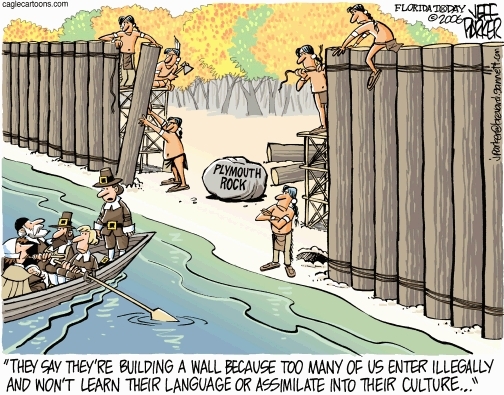 There’s Thanksgiving and then there’s Thanksgiving. Thanksgiving seems to be one of those holidays were we and by we I mean everyone just don’t know where it comes from. Traditionally of course the first Thanksgiving was in 1621 in Plymouth, MA, with a few pilgrims and the Wampanoag tribe (who in years to come would not be so thankful for the pilgrims). This seems to be the most celebrated version today. We can see it in arts and crafts in elementary schools, in parades, and television.
There’s Thanksgiving and then there’s Thanksgiving. Thanksgiving seems to be one of those holidays were we and by we I mean everyone just don’t know where it comes from. Traditionally of course the first Thanksgiving was in 1621 in Plymouth, MA, with a few pilgrims and the Wampanoag tribe (who in years to come would not be so thankful for the pilgrims). This seems to be the most celebrated version today. We can see it in arts and crafts in elementary schools, in parades, and television.There are of course other first Thanksgivings. British colonists gave ‘thanksgiving’ in 1619 in Virginia. There are even apparent records that say that the first ‘thanksgiving’ celebration was done in 1565 in St. Augustine, FL.
At the website history.com it states that, “Although this feast [between the pilgrims and Wampanoag] is considered by many to be the very first Thanksgiving celebration, it was actually in keeping with a long tradition of celebrating the harvest and giving thanks for a successful bounty of crops.” It seems that Europeans and Native Americans alike have been having ‘thanksgiving’ for hundreds and probably thousands of years around the harvest of crops.
The Pilgrims didn’t have Thanksgiving each year, and not until Abraham Lincoln in 1863 was Thanksgiving declared a holiday. The holiday was set on an ideal that the pilgrims had a bountiful harvest in 1621. Without the good harvest (and the Wampanoag, of course) the Pilgrims probably would not have survived another winter.
To me the harvest between the pilgrims and Wampanoag showed great hope that Europeans and Native tribes would get along in the years to come. Instead, it would be a temporary alliance at the outset of a troubled and broken relationship between the two people groups.













